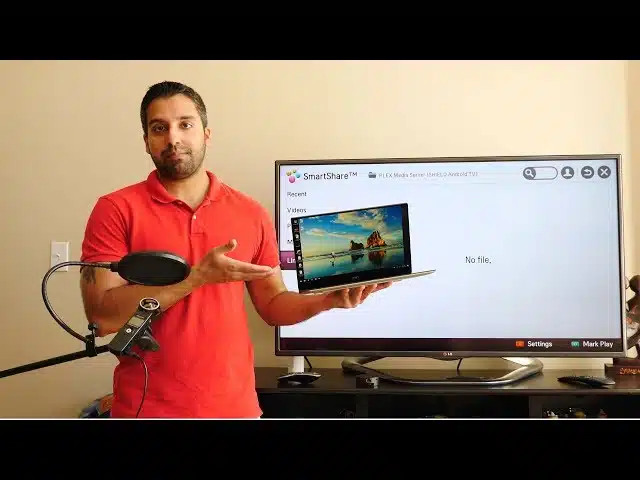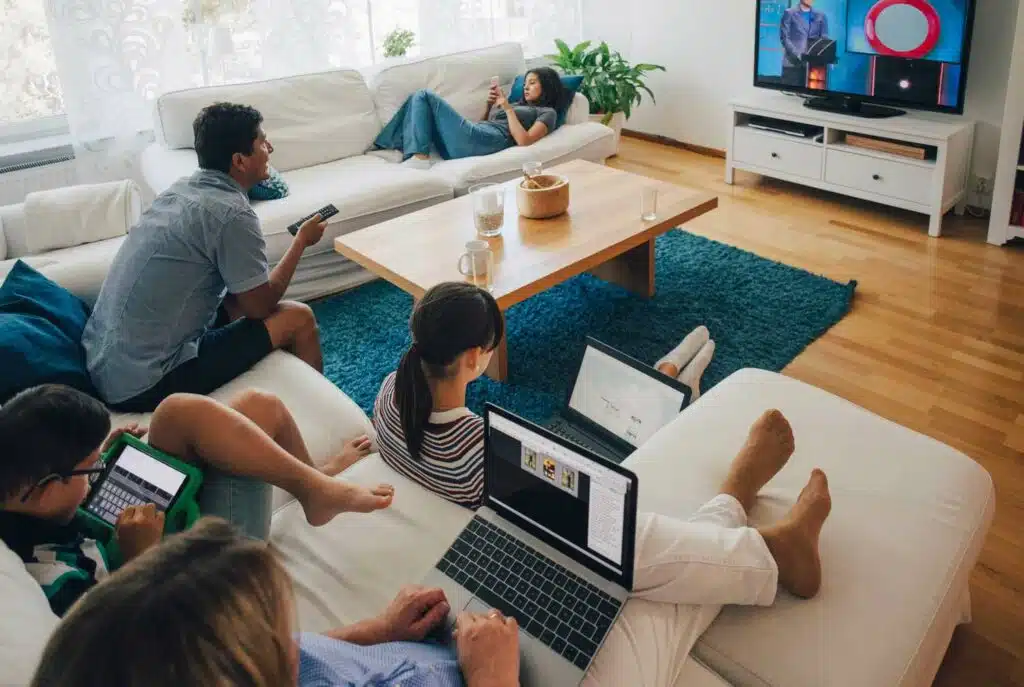Table of Contents
How To Connect A Television To A Computer?
How To Connect A Television To A Computer? There are several different methods of connecting a laptop to a TV, depending on your computer’s hardware and the type of video connection ports available on both devices. Consult your TV’s instruction manual and the computer’s user guide to find out what video connections it supports.
Almost all modern laptops have HDMI ports, which can also carry audio. However, older laptops may have DVI or VGA ports that only transmit video.
HDMI:
Whether you want to give a presentation on the big screen, share family photos, or watch a video, it’s quick and simple to connect your computer directly to your television. All you need is an HDMI cable.
If your TV doesn’t have an HDMI port, you can also use a DVI or VGA cable. However, you should check the back of your TV and computer to see what video connection ports they support.
HDMI connections are preferred because they carry both audio and video signals, while DVI and VGA only transfer video. If your computer doesn’t have an HDMI port, you may need to buy an adapter.
Connect the cable end to your computer’s HDMI port and the other end to a free HDMI port on your TV. Most computers have multiple HDMI ports, which are usually numbered. Then right-click on the desktop of your computer. Select Display Settings. Unfold the Multiple Displays menu and choose an option that works for you (such as Duplicate these displays). Click Apply to keep the settings.
DVI:
If your TV and computer have matching video ports, you can use a standard DVI cable to connect them. The computer must be capable of outputting a resolution that matches the television’s scan frequency (also known as refresh rate) to avoid overscan, which can cause some of the screen to be cut off or missing. Some computers require a special DVI to HDMI adapter or cable to output a compatible signal. Check the instruction manual for your television and the computer’s video card to determine if this is necessary. Also, if your computer is using a DVI to HDMI connection for video and it doesn’t have an audio out port, you will need a separate audio cable.
If the connecting ports are the same, you can simply connect them with an HDMI cable. Be sure to get a cable with the same connector on both ends. You can usually find cheap HDMI cables that work just as well as the more expensive ones. Once you’ve connected the cable, switch your TV to the input that corresponds with the port you plugged the cable into. If your TV has more than one HDMI input, make note of which one you used so that you can easily change back to it later.
VGA:
If you have an older laptop or a company-issued computer with a VGA (also known as D-Sub) port, you can connect the computer to a television using a VGA cable. These cables are available at most local and online computer or electronics retailers. You will also need a 3.5 mm audio cable if you want to transmit your computer’s sound.
Plug one end of the cable into the Headphones jack on your computer, which is typically a green port. The other end of the cable should be connected to the “VGA,” “D-Sub” or “PC-Input” port on your TV. This input is usually labeled PC or Computer on the TV.
If your TV doesn’t have an HDMI port, you can use a video converter to make the connection. These devices can be found at most local and online electronics retailers. Once you have connected the cable, switch the TV input to the corresponding channel on your computer.
You should see a screen that says “Multiple displays.” Right-click on the desktop and select Display Settings. Unfold the Multiple displays window and choose Duplicate these displays or Extend these displays to make your TV a full-screen display of your computer.
Component Video:
A Component Video television can be connected to a computer by using a component video cable. This cable has three RCA connections with red, blue, and green connections and it is often used for older computers. However, a newer PC might have a DVI or HDMI port instead of this type of connection. An adapter is needed to connect to the TV.
Once the cable is connected, right-click on the desktop of the computer and select Display Settings. Click the Detect button and your computer should begin looking for the TV. Once it finds the TV, it will show two squares on the screen, display numbers 1 and 2, and the computer will ask you to choose a setting.
If you select Duplicate these displays, it will mirror what is on the screen of the Computer to the TV and extend your desktop across two screens. This is very useful for laptops with multi-screen support and enables you to drag windows from one screen to the other. Some older PCs can still join their TV to the computer via DVI or VGA, but an additional device is required because these connectors only transmit the image and not the audio.
USB-C:
Whether you’re giving a presentation. Watching a movie, or showing off your vacation photos to family and friends. There are several ways to get content from your laptop or PC onto a TV screen. Using wireless methods like Chromecast or AirPlay (for Apple devices only) is easy enough. But wired options are even easier — especially if you have a newer computer with USB-C ports.
The most common way to connect a TV to a PC is via HDMI. Most modern laptops have a full-sized HDMI port, and most TVs have at least one HDMI input port. Just plug one end of an HDMI cable into the USB-C port on your computer, and the other end into the HDMI port on your TV.
Once the connection is complete, Windows should automatically detect your TV and display it on the screen. You can then use the options in the Display Settings window to change how your TV displays on your computer, such as extending or mirroring the display. A wired connection offers a bit more reliability than a wireless connection, and it’s usually faster as well.






Add comment